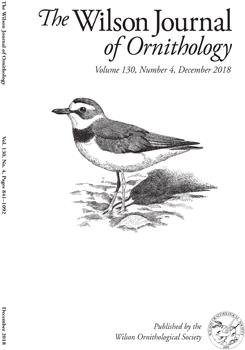The American Barn Owl (Tyto furcata) is a bird of prey that predominantly feeds on small mammals by swallowing them whole; the undigested parts are regurgitated in pellets. This study aimed to characterize the diet of the American Barn Owl in a lowland Atlantic Forest remnant in southeastern Brazil by analyzing the material contained in pellets. Prey items were quantified by counting the number of skulls or paired bones in each pellet, and the ages of the mammals (rodents) found as prey were classified based on the pattern of wear of the occlusal surface of the molars. For invertebrates, we counted the number of heads or hind legs. We analyzed 48 pellets and each one contained 1–7 depredated individuals (mean= 4.0). Two major groups of food items were identified (192 specimens in total): mammals (Mus musculus [n=179 specimens, or 93.2% of prey items; FO = 100%], Rattus rattus [n = 2, or 1.0%; FO= 4.2%], and Carollia sp. [n = 1, or 0.5%; FO= 2.1%]) and insects (n=8 samples; FO=16.7%: Orthoptera [n=6 specimens, or 3.1%; FO=12.5%], Lepidoptera [n=2, or 1.0%; FO=4.2%], and Hymenoptera [n=2, or 1.0%, FO=4.2%]). For the exotic rodent M. musculus, 142 right mandibular branches were identified, of which 8.5% were classified as Pup (n = 12 individuals), 57.0% as Adult I (n = 81), 19.0% as Adult II (n = 27), and 15.5% as Senior (n = 22). The results corroborate similarities in the diet and feeding behavior of T. furcata throughout its distribution in the Americas and with T. alba. Tyto furcata, although generally a rodent specialist, has an opportunistic foraging strategy and may respond to prey availability, possibly acting as a natural biological control agent of agricultural pests such as exotic rodents. Further studies are recommended to assess whether seasonality influences the frequency at which nonnative prey are consumed by T. furcata.
How to translate text using browser tools
9 April 2019
Diet of the American Barn Owl, Tyto furcata (Temminck, 1827), in a Tabuleiro Atlantic Forest remnant in southeastern Brazil
Bianca Köhler,
Lillian J. Guimarães,
Ana Carolina Srbek-Araujo
ACCESS THE FULL ARTICLE
bird of prey
ecosystem service
exotic rodent
owl pellets
trophic ecology





